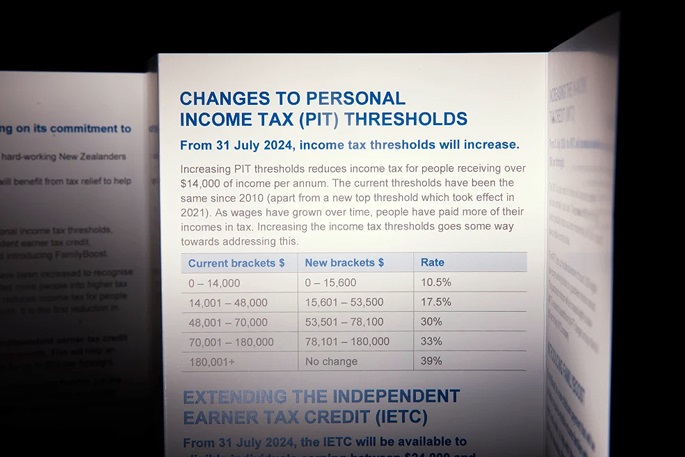And so, the state advances. Thirteen steps forward, four steps back, then onward again.
From 2011 through 2023, failure to index the income tax thresholds pulled about a million wage and salary earners from the bottom 10.5% tax bracket into the 17.5% range and another eight hundred thousand from the 17.5% range into the 30% tax bracket.
It is hard to say how much the state has profited from the bipartisan refusal to automatically index the income tax thresholds. If you plug adjusted thresholds into Treasury’s tax calculator, you get a warning that the results are unreliable because the changes are too big.
But with that caveat, the calculator tells you it’s on the order of $6.5 billion per year – compared to a world in which the bottom tax bracket continued to catch only the bottom 29% of earners, as it did in 2011, and in which the 33% bracket did not catch anyone in the bottom 86%.
When National says that people are due for tax relief, they’re absolutely correct.
Unfortunately, every bit of that extra government revenue has been spent – and the government has borrowed to spend even more. Unwinding only a small part of inflation’s accumulated effect on the tax system required the government to borrow even more money.
As Jenée Tibshraeny put it, “the situation is a bit like someone taking out an overdraft to cover their living costs because they’ve taken a pay cut, and then stopping their Netflix subscription to pay for a new couch.”
The government is working to reduce spending and will laudably end the structural deficit in 2027 if it sticks to its plans.
But Budget 2024 entrenches the government’s share of overall economic activity at levels well above Labour’s so-called 2019 ‘Wellbeing Budget’. Labour had promised government spending would make up about 29% of economic activity – a substantial increase on 2017.
During the election campaign, National promised to return spending to below 30% of GDP, without saying when. The Budget forecasts show government spending below 30% of GDP in 2034 and not reaching 29% of GDP until 2038.
Despite the tax threshold adjustment, core tax revenue will be a larger share of GDP than it was in 2019 – all the way through to 2038. Inflation will again keep pulling taxpayers into higher tax brackets.
Automatically inflation-adjusting the tax thresholds would end the charade.
This article was originally published HERE.


